|
The genes of any species, including Homo sapiens, constitute one record of its evolutionary history. In this activity you will use genetic data to infer the degree of relatedness of human populations from various parts of the globe and to propose patterns of human migration during the last ~150,000 years.
You should understand the following concepts before you begin this activity:
- the relationship between chromosomes and genes;
- the difference between a gene and an allele;
- genes as the basis of biological continuity between generations;
- the meaning of selective advantage;
- the role of inference in science; and
- the names and locations of the earth's continents and major geographic regions.
Consider the two major hypotheses about the origin of modern human beings:
- Hypothesis 1: Modern Homo sapiens arose once, in one place, from its ancestral species. Members of this species then migrated from there to all parts of the globe.
- Hypothesis 2: Modern Homo sapiens arose in a number of different locations from similar ancestral populations at roughly the same time. The hypothesis assumes that although the populations were in different locations, they did interbreed and exchange genes.
To see how data on genetic variation can distinguish which of these hypotheses is correct, look at the following maps, note the amount of genetic variation for 4 segments of DNA (HSV1, HSV2, STRP, y-STRP), and then list the continents in order on the basis of the amount of genetic variation, from most to least. Note that the maps show the number of alleles and (unique alleles) per continental population
Click on a map icon to view the map full size.
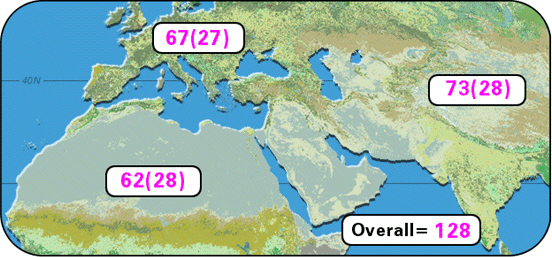 Map 1: HVS1 Map 1: HVS1
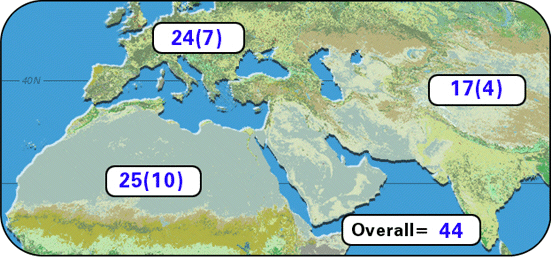 Map 2: HVS2 Map 2: HVS2
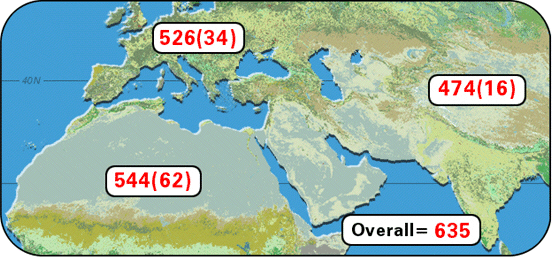 Map 3: STRP Map 3: STRP
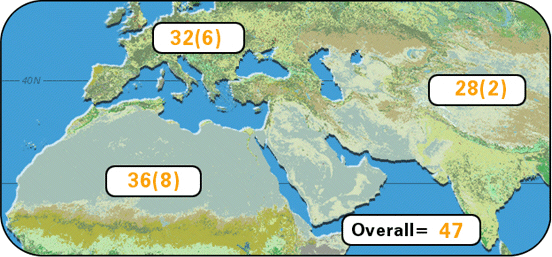 Map 4: y-STRP Map 4: y-STRP
The next 7 figures show data from 12 different alleles of one gene on chromosome 12. The alleles are numbered 1 through 12. Examine the data for each of the seven geographic regions and, once again, list the geographical regions by the amount of genetic variation, from most to least.
Click on a map icon to view the map full size.
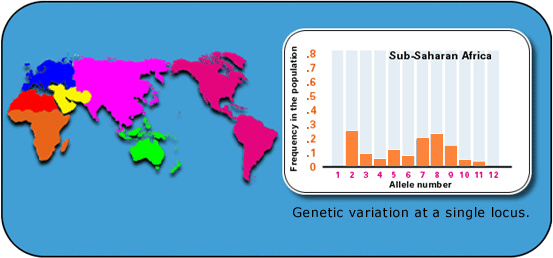 Fig. 1: Sub-Saharan Africa Fig. 1: Sub-Saharan Africa
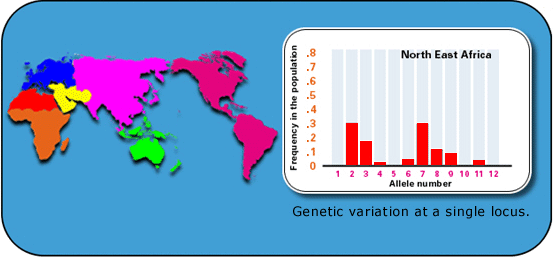 Fig. 2: North East Africa Fig. 2: North East Africa
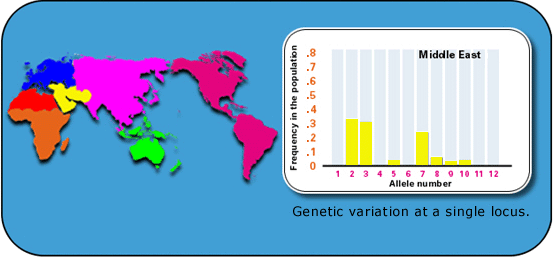 Fig. 3: Middle East Fig. 3: Middle East
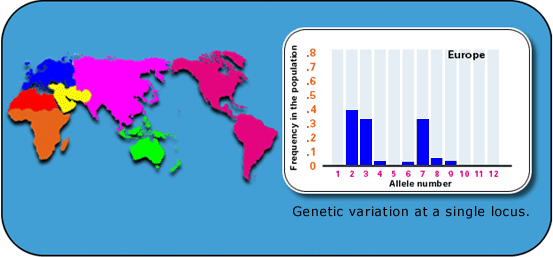 Fig. 4: Europe Fig. 4: Europe
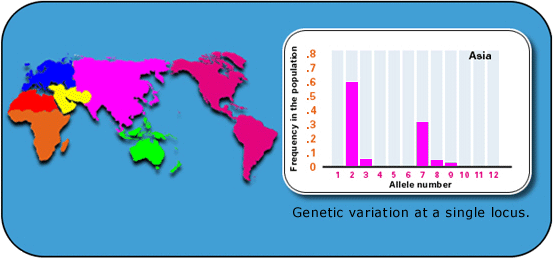 Fig. 5: Asia Fig. 5: Asia
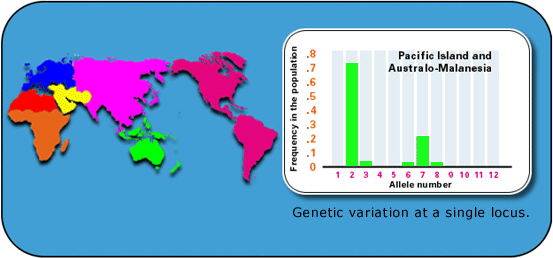 Fig. 6: Pacific Islands and Australo-Malanesia Fig. 6: Pacific Islands and Australo-Malanesia
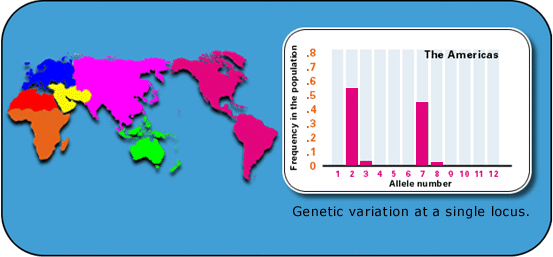 Fig. 7: The Americas Fig. 7: The Americas
Recall the two major hypotheses about the origin of modern human beings:
- Hypothesis 1 - Origin in one place and later migration to other parts of the world
- Hypothesis 2 - Multiple origins in several different places at the same time
Consider the two sets of data you have examined. Which hypothesis do the data support more strongly?
Hint: If hypothesis 1 is correct, what would you predict about the amount of global genetic variation by region? What would you predict if hypothesis 2 is correct?
These genetic data do not demonstrate that one or the other hypothesis is correct, but rather they provide insights into the origin and movement of modern human beings. Scientists still disagree about whether the African replacement model (also called the "Out of Africa" model" or the multiregional evolution model is correct. At the moment, most favor the African replacement model. Presumably, the wealth of data from the Human Genome Project and other research will permit more definitive answers in the future.
Footnotes
1. Allele: an alternate form of a gene at a given locus. For example, the gene for ABO blood group has three alleles, A, B, and O.
2. Selective advantage: a survival or fertility benefit conferred on a given organism by its phenotype in a given environment.
3. Inference: a conclusion drawn from facts or premises; often used in historical sciences such as evolution when the situation under study cannot be recreated.
 Return to Top
Return to Top
 Back
Back
|

